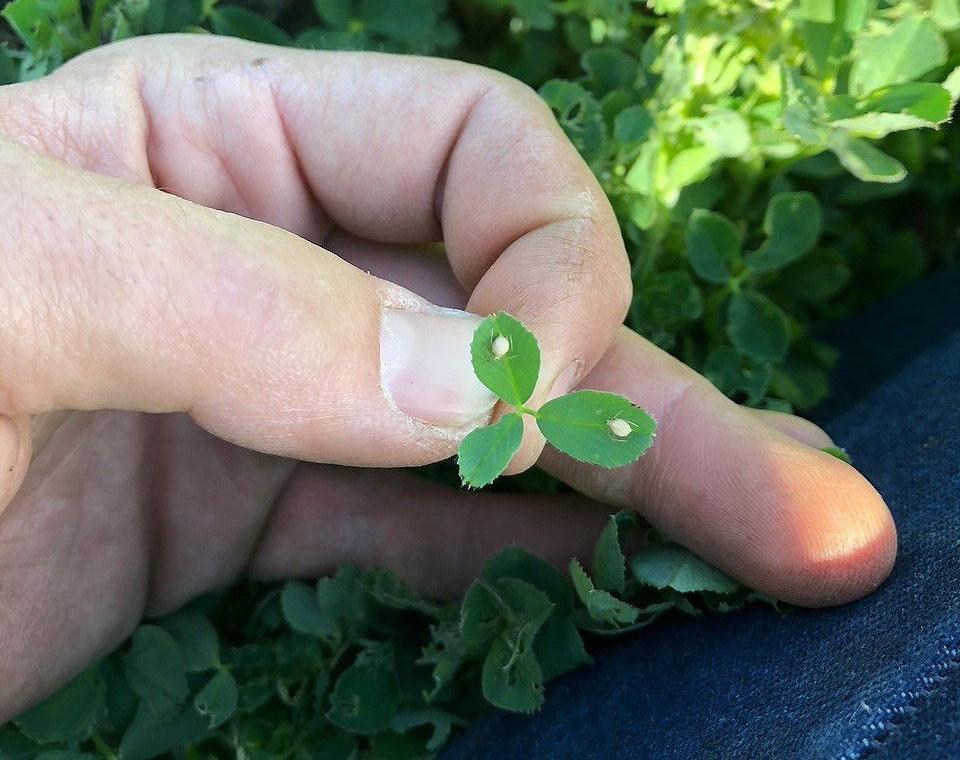
What is This Insect?
We received the above photo (Figure 1) taken in an alfalfa field in south central Nebraska, asking us "What is this insect". These are aphid “mummies,” caused by a small parasitic wasp which has killed these pea aphids — a common early season alfalfa aphid in Nebraska. The wasp lays an egg inside the aphid. The larval wasp feeds on the aphid interior and eventually kills it, leaving this tanned shell to protect the wasp pupae. Soon an adult wasp will cut a circular hole in the mummy and emerge to attack more aphids.



Aphid mummies can be found on most Nebraska field crops (corn, soybeans, alfalfa, sorghum, wheat, etc.). These wasps play an important role in suppressing aphid populations if not suppressed by use of broad-spectrum insecticides earlier in the season.
We occasionally get questions about other insects found in crops, including lady beetle larvae and pupae, and hover fly (syrphid) larvae. These beneficial insects feed on aphids, mites and other small insects on crops.
Additional resources to identify beneficial insects include Nebraska Extension Circulars 1578 and 1579.
Online Master of Science in Agronomy
With a focus on industry applications and research, the online program is designed with maximum flexibility for today's working professionals.
